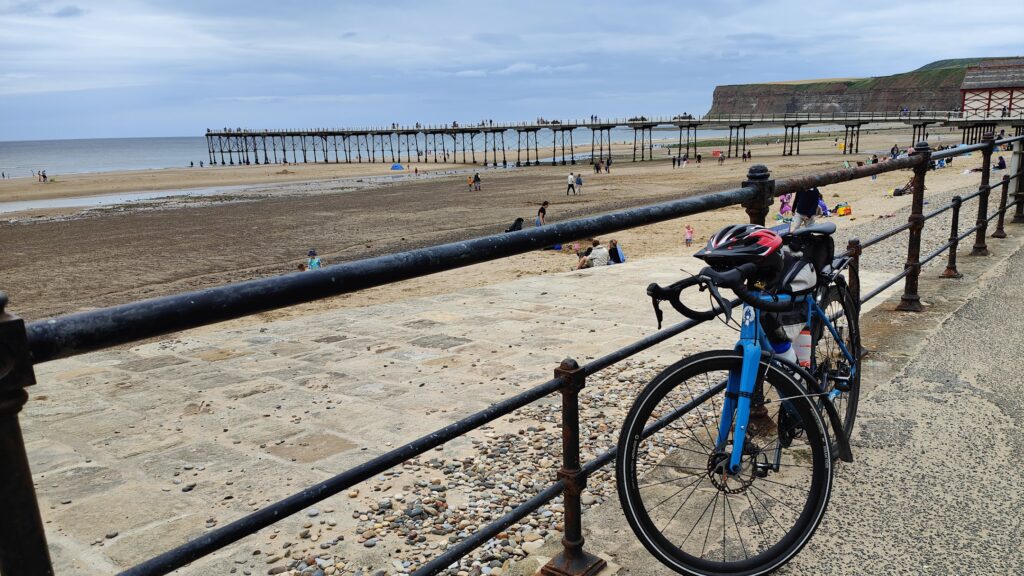
Helmsley has to be one of my favourite little towns anywhere. It’s just delightful. I can’t really find anything not to like. It has a fine market place, with a splendid market cross surrounded by handsome inns, cafes and shops all built from the local honey-coloured stone. Everything is just a short walk away: the imposing castle ruins, the impressively pinnacled church tower, the fine walled garden, the heated outdoor swimming pool, the extensive grounds of Duncombe Park country estate, the small brewery with its own micro pub. And right on the doorstep are the North York Moors National Park and Rievaulx Abbey. I’d be happy to live there I think. I wouldn’t say that about just anywhere. I’m quite fussy. But Helmsley ticks the boxes for me.
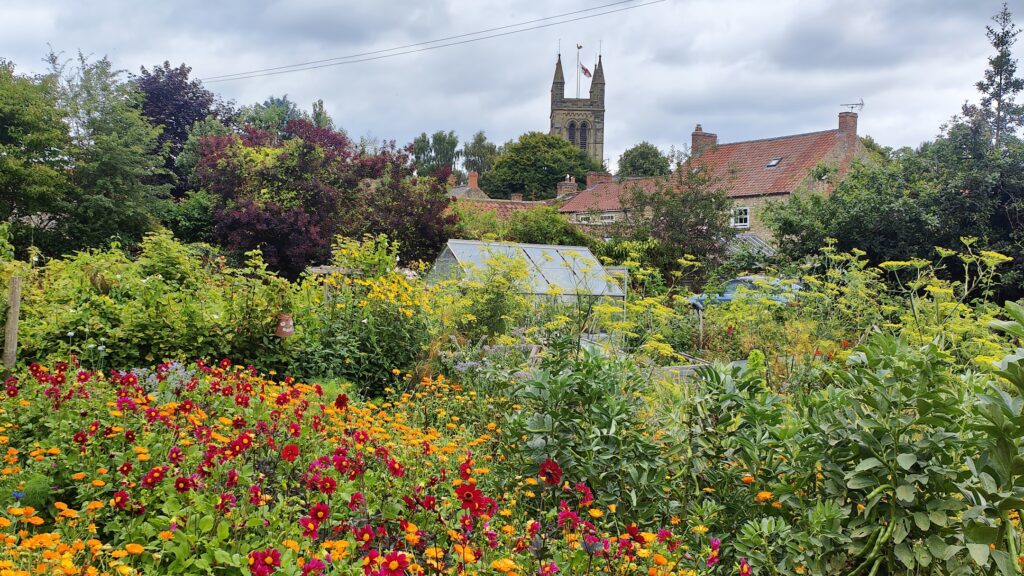
This morning I discovered that it also has a really excellent bakery, which was a fine option for a quick breakfast roll and a cup of tea in the early sunshine before I rolled out of town. The sun, as forecast, didn’t last; but the dry, warm weather and helpful breeze stayed with me all day. I had two possible routes open to me to reach the coast at Saltburn by the Sea, one either side of my straight line. I went for the almost vertical straight line route across the moors from Kirkbymoorside, a pretty town six miles to the east of Helmsley, and started my ride by heading there along the main road. After three miles I was able to take a back road that avoided traffic and was pleasantly surprised that it led me to a turning for St Gregory’s Minster.
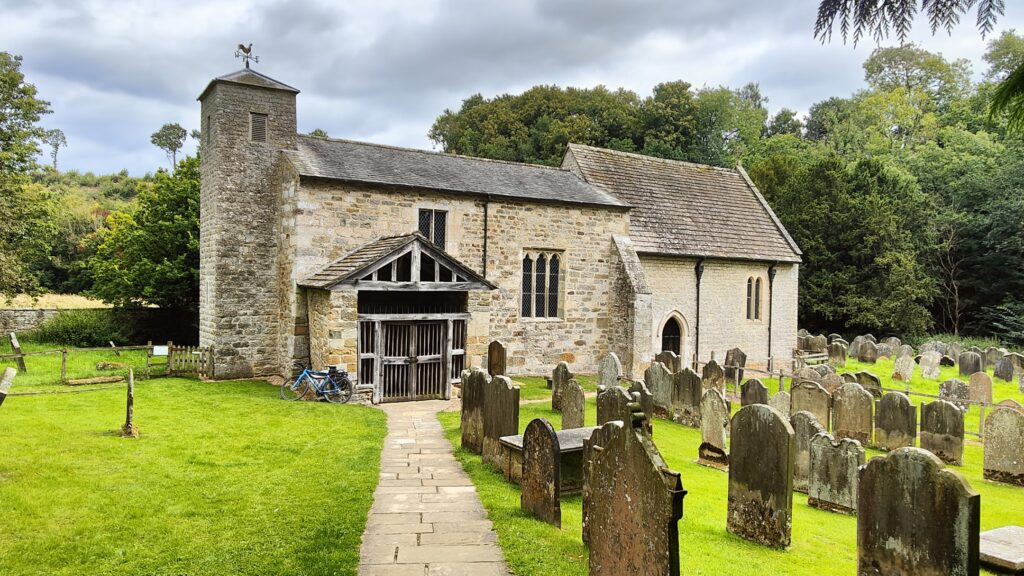
You expect minsters to be grand, cathedral sized churches, like in York, Beverley and Southwell, or at least a very large parish church in a big town or city, whose status has been elevated, like recently in Doncaster or Rotherham or Hull or even Grimsby. But St Gregory’s Minster was a small, ancient building, tucked away down a dead end in a leafy glade. There wasn’t much else around it, except a graveyard. Quite the opposite of all the other minsters I know, in fact. I was right to think it seemed old. The minster is in fact Anglo-Saxon, dating back to 1060, which is not at all common. Had the porch not been locked, I might have noticed an inscribed Saxon sundial above the church door from the same period, which is even more unusual. I presume the porch is a later addition, because it keeps out the sun! I enjoy these little curiosities, and the coincidences that bring them to our attention. And now I have another reason to come back.
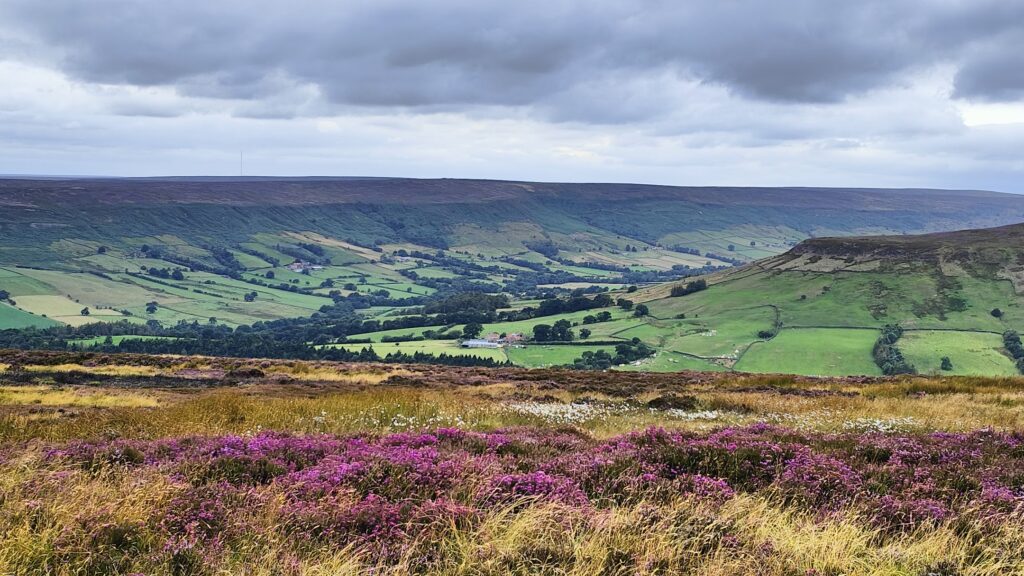
I cycled up the slope through the old buildings that make up Kirkbymoorside’s quaint main street, and out onto the start of the Yorkshire Moors. For a while it was quite gentle, as far as the attractive small village of Gillamoor, and then, rounding a bend, the full majesty of the heather clad moors was revealed. My route would take me up and over this treeless purple expanse, but not before I had first plunged steeply down Gillamoor Bank and then ground my way back up again. After that, things got a bit easier and the road climbed quietly for maybe six miles to over 400m. It felt like I was crossing the roof of the world, with commanding views down into remote, green sided valleys that stretched away into the distance. I didn’t pass a building for half an hour until, near the highest point, I reached the lonely Lion Inn. Since time was on my side, I thought I should register my presence, and I enjoyed half a pint of Theakston’s Best, sitting in a large wooden armchair next to a grand piano under several oil paintings. The place was busy with lunchtime diners and passing walkers. I’m sure it has lifted the spirits of many a lonely traveller over the decades.
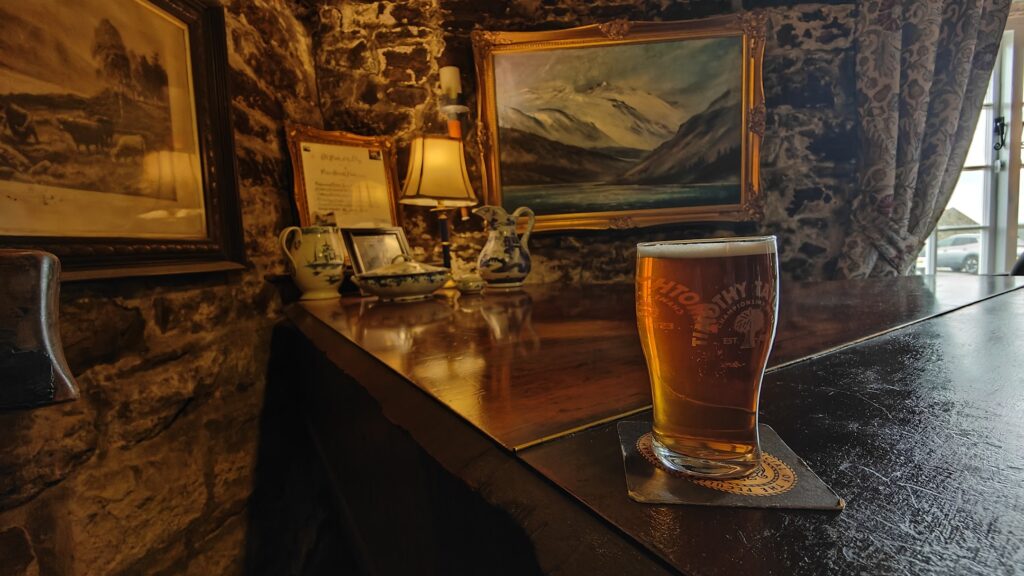
They seem to specialise in very steep roads around here. I saw one turning with a warning sign that said 33%. I went up and down several myself, especially when I reached the village of Castleton in the Esk Valley. The long descent from the top of the moors was pretty epic, followed by the inevitable long climb out again. But from here I could now see the sea, and it was pretty much downhill all the way to Saltburn, which turned out to be a charming Victorian resort perched on a cliff top overlooking the beach and its long, iron pier. The two levels are usually linked by the country’s oldest functioning funicular railway. Except that it was not operating due to fire damage in January. It is under maintenance and should open again soon. The alternative is a 25% hill with hairpins from the seafront to the grand former Zetland Hotel and nearby train station and town centre. I decided to leave that until last and ride it once!
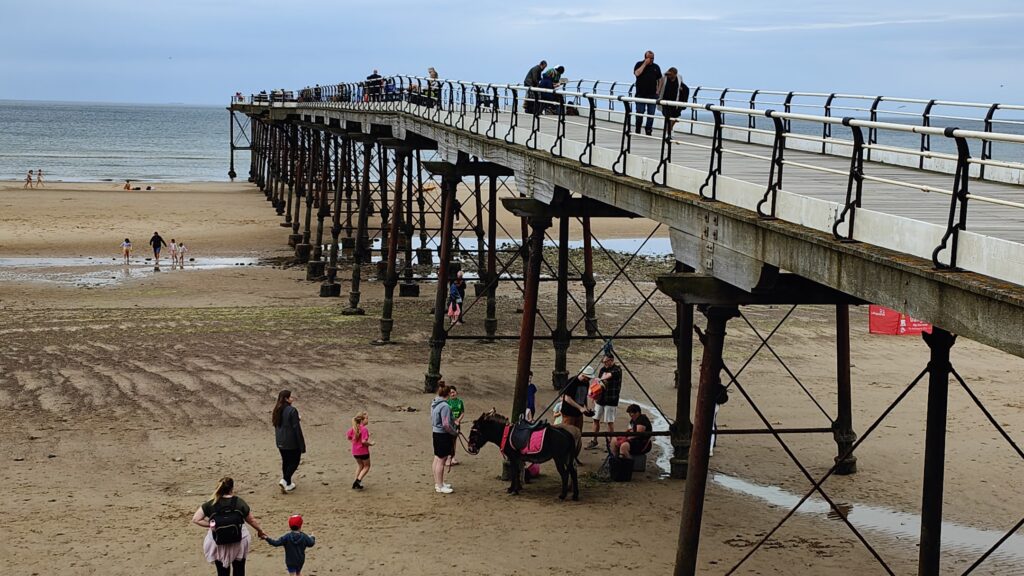
The tide was out and the beach, pier, amusements, mini golf and other entertainment were all very popular today. It was a cheerful place to be. I walked my bike to the end of the long pier and drank in the views and the sea air. I felt like this would be a place I would be seeing again, perhaps with company next time. It was nicer than I had expected. There was time for a proper sit down lunch, so I sat on the rooftop terrace of a fancy seafront restaurant and enjoyed Whitby scampi. It was the perfect end to a great day of cycling. Then I hopped on a train to Darlington to start the long trip home, where it had been raining for much of the day.
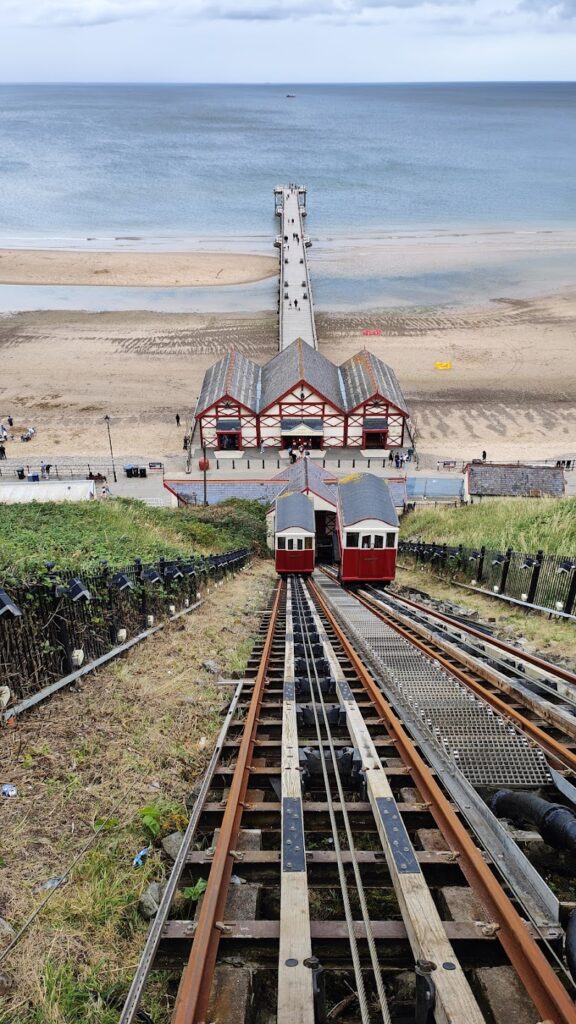

One reply on “Cardinal Spins 7: NNE – Day 3”
You just missed us at Lastingham (also an 11th century church). Good to see you enjoyed the area – very beautiful at this time of year!!